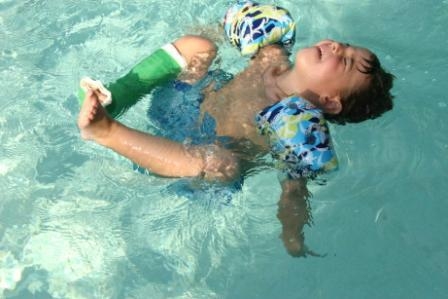
New parents commonly feel overwhelmed by their newfound responsibility of caring for a child. For many parents, this feeling often does not go away as your child ages. The truth is, there is always more to learn about taking the best care of your child. For instance, how can you know that you need to take your child to visit an orthopedic doctor? This helpful article will outline some of the most common reasons parents may make an appointment for a child with an orthopedic specialist.
Scoliosis

screen shot in windows
Scoliosis is a curvature of the spine. The most common curvature shapes are “C” a d “S.” To date, medical science is still not sure exactly what causes scoliosis. The treatment will depend on whether the scoliosis is mild or more severe and what the long-term prognosis is. Mild scoliosis may not require immediate treatment but if the issue progresses other problems with breathing and joint pain can occur. The most common orthopedic treatments in more severe cases of scoliosis include surgery or the use of a back brace. Often scoliosis will show up between 10 and 14 years of age.
Flat Feet

print screen
“Flat feet” is just what it sounds like – this condition occurs when the normally flat feet that occur in infancy do not begin to develop arches as the child ages. The amount of treatment needed will depend on whether the condition begins to cause your child pain. Sometimes an orthopedic doctor will prescribe special shoe inserts or other treatments if pain occurs.
Toe Walking

screen shot in windows
Toe walking (standing up on tiptoes) can be a normal part of childhood development as your child is learning to walk. When toe walking is frequent or exclusive, or when it continues to occur after the age of two, you may want to make an appointment for your child with an orthopedic doctor. Sometimes toe walking may indicate that nervous system problems are present. At other times, it may be as simple as improperly stretched calf muscles that make walking heel-to-toe painful for your child. Only an orthopedic specialist will be able to determine the right course of action.
Bowlegs

screenshot
The presence of bowed legs (legs bowed out to look outward-bent) in infancy is not cause for concern. But if bowlegs persist as your child gets older, or if legs begin to bow outward more noticeably, you may need to see an orthopedic specialist to find out why. The reasons can range from a simple vitamin deficiency to a more serious underlying medical condition.
Pigeon Toes

image ru
Pigeon toes are another common manifestation when children are very young and just learning how all their muscles work together. But a significant turning-in of the feet as a child gets older may be cause for concern. An orthopedic specialist can determine whether treatment is needed to correct the in-toe walking pattern.

By learning about the most common orthopedic concerns in children, you can keep your eyes peeled for signs that your child may need treatment from an orthopedic specialist.
About the Author:
Debbie Kern is mother to three. Her youngest son was diagnosed with scoliosis two years ago. She is improving daily under the skillful care of the family’s orthopedic specialist.
